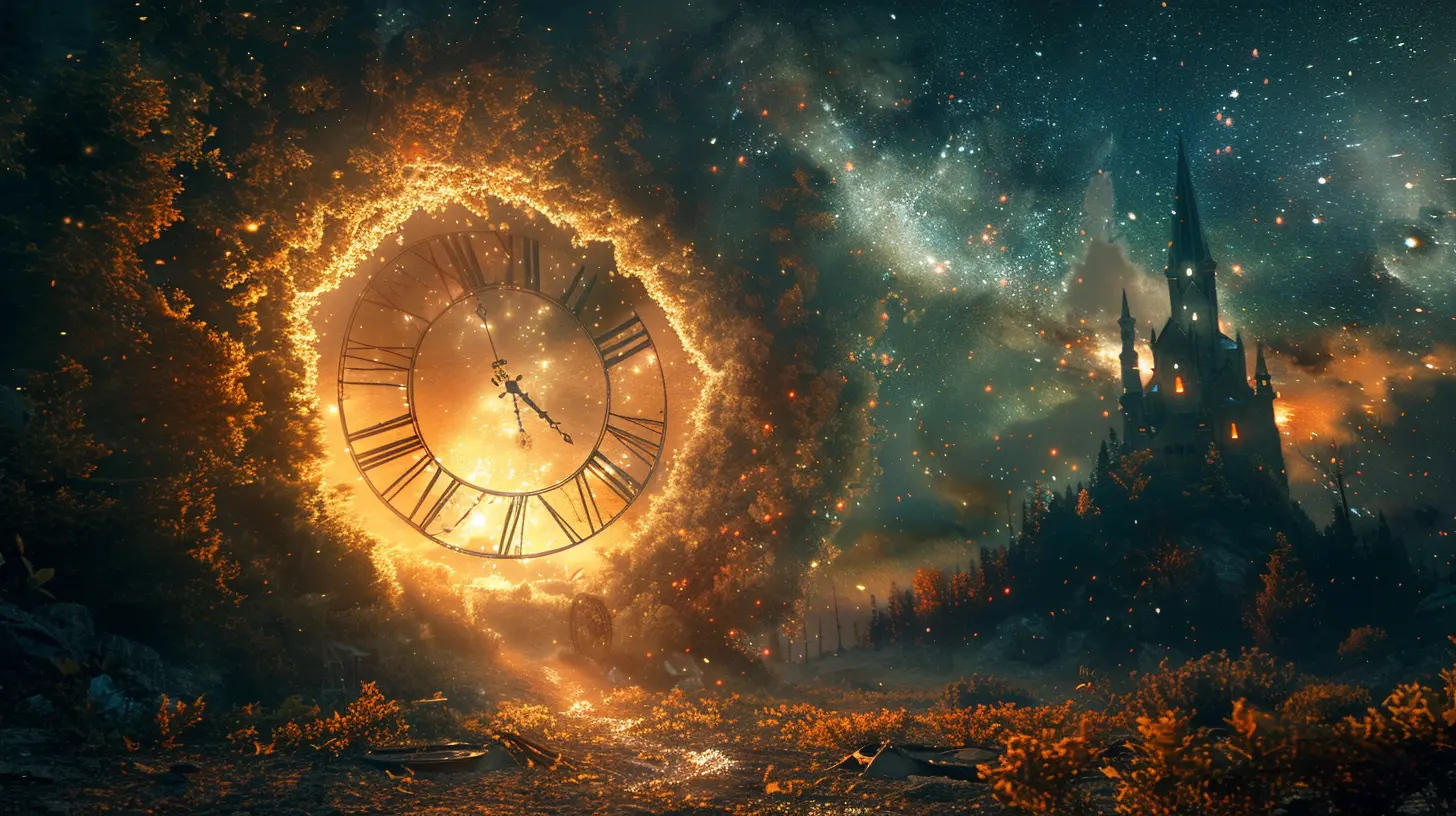Exploring Themes of Time Travel in Interactive Story-Driven Games
1 September 2025
Time travel has always been one of the most fascinating concepts in storytelling. Whether it’s jumping to the past to fix a mistake or leaping to the future to witness what lies ahead, there’s something irresistible about bending time to your will. It’s like holding the ultimate “undo” button, but far more complicated—because messing with time rarely comes without consequences, right?
Interactive story-driven games, in particular, have embraced this concept with open arms. And why wouldn’t they? These games already thrive on choice and consequence, and when you throw time travel into the mix, the stakes get infinitely higher. So grab your metaphorical flux capacitor because we’re about to dive into how time travel themes are explored in this genre.
Why Time Travel Fits Perfectly in Story-Driven Games
Think about what makes interactive story-driven games so captivating. They revolve around making decisions, living with their outcomes, and often discovering that those choices aren’t as clear-cut as you first thought. Now toss in the ability to rewind time or visit alternate timelines. That’s when things really start to get wild.Time travel in games isn’t just about zipping between years like you’re Marty McFly. It’s more about the emotional, moral, and existential dilemmas that arise. What would you change if you had a second chance? What if fixing one thing ruins something else? These are questions that keep us hooked. 
The Mechanics of Time Travel in Interactive Games
Before diving into the storytelling, let’s talk about how time travel actually works in these games mechanically. Developers often find creative ways to let players mess with time without breaking the game. Whether it’s an in-game gadget or a supernatural ability, the approach varies:- Rewind Mechanics: Think about games like Life is Strange. You make a choice, see how it plays out, and if it blows up in your face? No problem—rewind and take another crack at it. It’s like having a cheat sheet for life, but with plenty of emotional weight.
- Branching Timelines: Other games, such as Chrono Trigger, take it a step further. Changing the past alters the future in profound ways, creating entirely new timelines. You’re not just fixing mistakes; you’re rewriting history itself.
- Looping Narratives: Some games trap you in time loops (Outer Wilds, for example). Here, you repeat the same period over and over. Each loop is a chance to learn more and, hopefully, break out of the cycle. 
Memorable Games That Nailed Time Travel
Some games use time travel as a flashy gimmick, but others dig deep into the concept, using it to tell stories that stay with you long after you’ve put down the controller. Let’s talk about a few masterpieces that really nailed it.1. Life is Strange (2015)
Ah, Life is Strange. If you’ve played it, you know how emotionally gripping it is. You step into the shoes of Max Caulfield, a photography student who discovers she has the ability to rewind time. Sounds like a dream, right?Not quite. The game forces you to wrestle with some pretty heavy questions. As Max, you’ll find yourself constantly wondering: Should you meddle with fate? Is it worth fixing the small stuff when the bigger picture might unravel? And the ending? No spoilers, but let’s just say you’ll be reaching for the tissues.
2. Chrono Trigger (1995)
This classic RPG wasn’t just ahead of its time (pun 100% intended)—it set the standard for time travel in games. The game’s story spans across multiple eras, from prehistoric times to a dystopian future, and every action you take in one era ripples through the rest.It’s not just the mechanics that make Chrono Trigger memorable. It’s the story itself. The game dives into heavy themes like loss, responsibility, and redemption, all while making it ridiculously fun to play.
3. Outer Wilds (2019)
Imagine being stuck in a 22-minute time loop as the universe ends repeatedly. That’s Outer Wilds in a nutshell. What sets this game apart is how it encourages exploration and discovery. Each loop isn’t about failure; it’s about learning.It’s almost like the game is teaching you something profound: Time isn’t an enemy—it’s an opportunity. And when you finally piece everything together, the payoff is nothing short of breathtaking.
4. The Forgotten City (2021)
Originally a Skyrim mod, The Forgotten City evolved into a standalone masterpiece. You’re trapped in an ancient Roman city where breaking a mysterious golden rule results in everyone turning to gold. The only way to escape? You guessed it—time travel.Each loop gives you a chance to understand the city’s mysteries and uncover the truth. What’s remarkable is how the story weaves moral dilemmas with time mechanics, forcing you to think about the consequences of every single action. 
Why Time Travel Stories Resonate So Well
So, why does time travel work so perfectly in interactive games? It boils down to one thing: relatability.Sure, none of us have a time machine tucked away in our garage (if you do, please let me borrow it), but who hasn’t dreamed of fixing a past mistake? Or wondered how things might’ve played out if they’d made a different choice? Time-travel stories tap into something universal: our obsession with “what if.”
And then there’s the emotional side. In games, you’re not just watching a character deal with the consequences of their time meddling—you’re living it. It’s your choices, your regrets, your story. That level of immersion is something only games can achieve, and it’s part of why time travel themes hit so hard in this medium.
The Challenges of Time Travel in Games
Of course, pulling off time travel isn’t easy. For one, it has to actually make sense. Nobody likes a plot hole big enough to drive a DeLorean through. Developers also have to balance complexity with accessibility—get too complicated, and you risk confusing players.Then there’s the emotional aspect. Time travel plots are a tightrope walk; done poorly, they can feel gimmicky. A good time-travel story needs stakes, emotional depth, and consequences that feel real.
What's Next for Time Travel in Games?
The future for time travel in games looks bright—and not just because of advances in technology. More and more developers are using the concept to tell deeply personal stories, explore philosophical questions, and push the boundaries of what interactive storytelling can do.Who knows? Maybe the next breakthrough time-travel game is just around the corner. Or maybe we’ve already played it, and we just don’t remember because...time travel.
Final Thoughts
Time travel in interactive story-driven games isn’t just a trope—it’s a tool. A tool that allows us to explore the very idea of choice and consequence on a whole new level. It challenges us, it makes us think, and it often leaves us pondering the nature of time itself.So, the next time you’re playing a game that lets you rewind, loop, or skip through time, take a moment to appreciate the level of thought and care that went into crafting that experience. Because let’s face it: messing with time might be risky in real life, but in video games? It’s an absolute blast.
all images in this post were generated using AI tools
Category:
Interactive StorytellingAuthor:

Stephanie Abbott
Discussion
rate this article
1 comments
Silas Price
This article brilliantly captures the intricate ways time travel enhances storytelling in interactive games. By intertwining player choices with temporal mechanics, these narratives invite deeper engagement and reflection on consequences. A must-read for anyone interested in the evolving landscape of game storytelling! Great insights!
September 10, 2025 at 3:26 AM

Stephanie Abbott
Thank you for your thoughtful feedback! I'm glad you found the insights valuable and that the article resonated with you.


